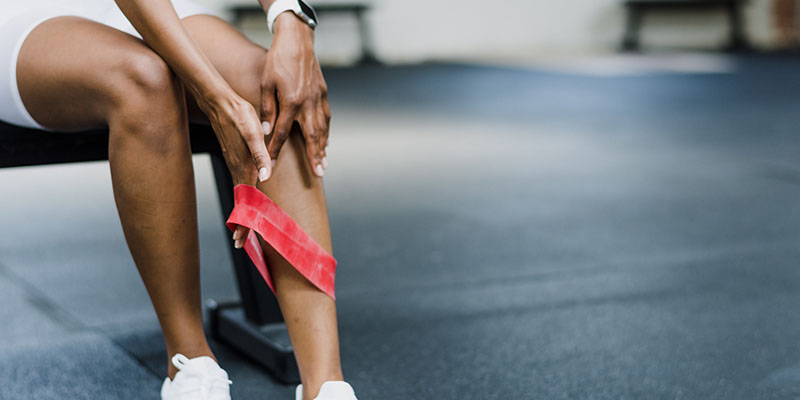Knee Osteoarthritis Physiotherapy

In this blog post, I try to explain as clearly as possible what osteoarthritis is, how it affects exercise, and how can we affect pain and joint function with physiotherapy.
What is Osteoarthritis?
Osteoarthritis is a condition that involves changes in the joints (cartilage and the capsule), bones and muscles. To simplify the cartilage on the joint surface wears down, which causes the joint gap (gap between the femur and tibia) to narrow, which in turn often results in changes in joint function and pain.
The cause of osteoarthritis is not known, but its occurrence has been found to be affected by Age, obesity, knee injuries, hard work, heavy exercise and knee misalignments. Many think that osteoarthritis comes from heavy exercise, but too much inactivity and obesity contribute to osteoarthritis too.
What can and should be done when you have osteoarthritis?
The cartilage properties of the joint are maintained through exercise, so the joint should be properly loaded and moved. Often, patients with osteoarthritis, feel pain when squatting and very painful movements should usually be avoided. However, if the pain is mild during exercise, the practice can be continued.
Knee joint-friendly workouts include: Swimming, cycling and walking. A client with osteoarthritis may benefit from using knee supports, so you can also try different knee supports during exercise.
If you are overweight, it is time to lose weight if you get osteoarthritis diagnosis. Even a 5 pound weight loss reduces the risk of knee osteoarthritis in women by up to 50%!
Lower weight also reduces the strain on the joint and thereby reduces knee pain.
What kind of effect could physiotherapy have?
Because osteoarthritis of the knee is a progressive disease, no physiotherapy can cure or stop it completely. However, physiotherapy can alleviate symptoms and pain and slow down the progression of osteoarthritis.
For knee osteoarthritis, training should last at least 8 weeks before any benefits can be realized. Exercise must continue to be regular, as the effect will not be sustained for a long time after the exercise. For example, in this review, a 12-time physiotherapy cycle was more effective in reducing knee pain than a less than 12-training period.
The most important thing is to focus on strength and mobility training of the muscles around the knee. Strong muscles reduce the strain on the knee joint and allow the knee to function optimally. Strong strokes should be are avoided, especially if severe pain occurs during stroke. Mobility training should be focused on if the joint’s path is restricted due to osteoarthritis or pain.

With my own customers I have had good results with the combination of weight training and knee and leg control exercises. I personally believe that strength and mobility training alone are not enough; it is also necessary to train knee control and train other tissues surrounding the knee. By surrounding tissues I mean e.g. Inner knee ligaments (ACL, PCL), because a strong knee is more than just strong muscles.
As a physiotherapist, I guide my client in movements that control pain but still strengthen the lower limbs in many ways. Thus, a movement that is completely painless for one customer may be painful for another. It is important to map the customer’s situation individually and find suitable exercises for him. If the client has a background in harder weight training, the elastic band alone will not be enough to strengthen the muscles.
